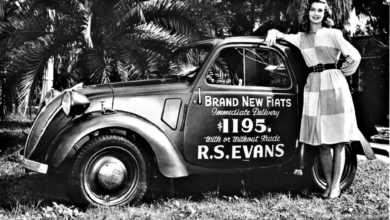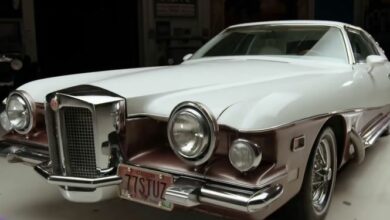The Pontiac Turbo Trans Am: A Turbocharged Firebird
While the Formula One is inarguably the world’s most popular automobile competition racing event today, there were other events that kept gearheads occupied before the first F1 event in 1950. One of such is the Monaco Grand Prix. Notably, every era has its champion, every period in time has certain motorsport with the most mass appeal. In the late ’60s and early ’70s North American motorsport scene, the Trans-Am series fit this profile to a T.
The series – held on fantastic roads and tracks like Sebring, Daytona, and Atlanta – exposed some of the brightest and most talented drivers of that era. And it was perfectly legal, sanctioned by the Sports Car Club of America (SCCA). As with all racing series, like the F1-specific single-seat, open-cockpit, open-wheel race cars, the Trans-Am series was originally a motorsport event for modified passenger sedans and coupes and later Grand Touring race cars.
What have all these got to do with Pontiac? So, GM introduced “Trans Am” as a specialty package for the Pontiac Firebird. Thus, all Trans Am Pontiacs are Firebird, but not all Firebirds are Trans Am. Interestingly, the Pontiac Trans Am did not participate in the Trans-Am series right away because even the smallest of the car’s engines exceeded the regulator’s 5.0L displacement limit. In 1980, Pontiac Trans Am got the Turbo. Let’s check it out.
We can’t talk about the Pontiac Turbo Trans Am without talking about the Pontiac Trans Am (without the turbo), and we can’t talk about the Pontiac Trans Am without talking about the Pontiac Firebird. Why? It was in 1969 that Pontiac introduced the famous Trans Am (T/A) to the Firebird lineup, which was nearly three years after launching the first generation Pontiac Firebird, and ten good years before the model got the turbo treatment.
Notably, there were the ’50s and early ‘60s quartets of concept cars known as General Motors Firebirds, but those aren’t the “birds” on our radar here. The Firebird we’re talking about is the Pontiac front-engine rear-wheel-drive muscle car (or Pony car) that GM designed to take on Ford’s Mustang. Firebird rode on the same F-body platform as the GM Chevy Camaro released five months prior.
Interestingly, Firebird’s arrival coincided with the birth of the Blue Oval’s Mercury Cougar in 1967, sharing the same platform as the Mustang. The Cougar would go on to become the most successful nameplate in Mercury’s history, as well as winning the MotorTrend Car of the Year award. Needless to say, GM’s Pontiac Firebird was one of the most iconic muscle cars of the ’60s era, and no gearhead worth his or her salt would argue that.
The car was extraordinarily full of personality, thanks to the performance tweaks and iconic styling that kept fans spellbound through the generations they were produced. They were made from 1967 through 2002, with more than six hundred thousand units sold. Part of the charm is the constant tweaks and changes to the powertrain, such as the introduction of the T/A Pkg, which kept its enthusiasts happy and its competitors on their toes. For this reason, Firebird is a poster child of evolution on par with technological developments and changing trends in the automobile world.
As for the Trans Am (T/A), the specialty package typically includes upgrades on handling, horsepower, and suspension system. It also includes minor cosmetic tweaks on areas like the wheels, hood, fog lights, and spoilers.
To appreciate the significance of GM’s introduction of the T/A variant, consider that as a car developed to compete with Shelby’s Mustangs, performance has always been the primary component in Firebird’s engineering. Then GM took the game a notch further with the T/A package. The best part? The car looked as cool as it drives, arrayed in Cameo Ivory with twin longitudinal Nassau Blue stripes. It ticked all the significant boxes; fuel efficiency, engine power, safety features, agility, and comfort.
The T/A arrived for the first time in 1969, packing a Performance and Appearance bundle that includes a UPC L74 400 Ram Air engine, black vinyl interior, Rally II wheels, and Cameo Ivory body paint with blue racing stripes across the hood and trunk. That year, 689 coupes and 8 T/A convertibles were made.
The kitchen got hotter with the introduction of the 301 Turbo in the T/A in 1980. The Pontiac 301 Turbo was a V8 301 cu in engine that Pontiac developed for the T/A. It produced a factory-rated 210 horsepower and 345 lb-ft of torque. The engine was subjected to some tweaks the following year, resulting in a reduced output of 200 horsepower and 340 lb-ft of torque.
Utilizing an exhaust-driven forced induction system, the Pontiac 301 Turbo would become the first turbocharged production Pontiac V8 engine as well as the second turbocharged American-made V8, albeit a short-lived engine – from 1980 to 1981.







